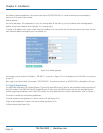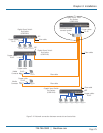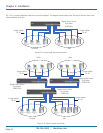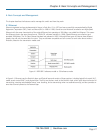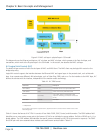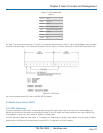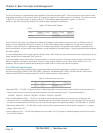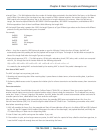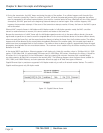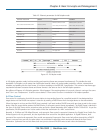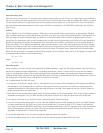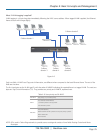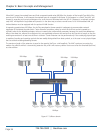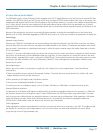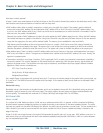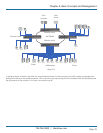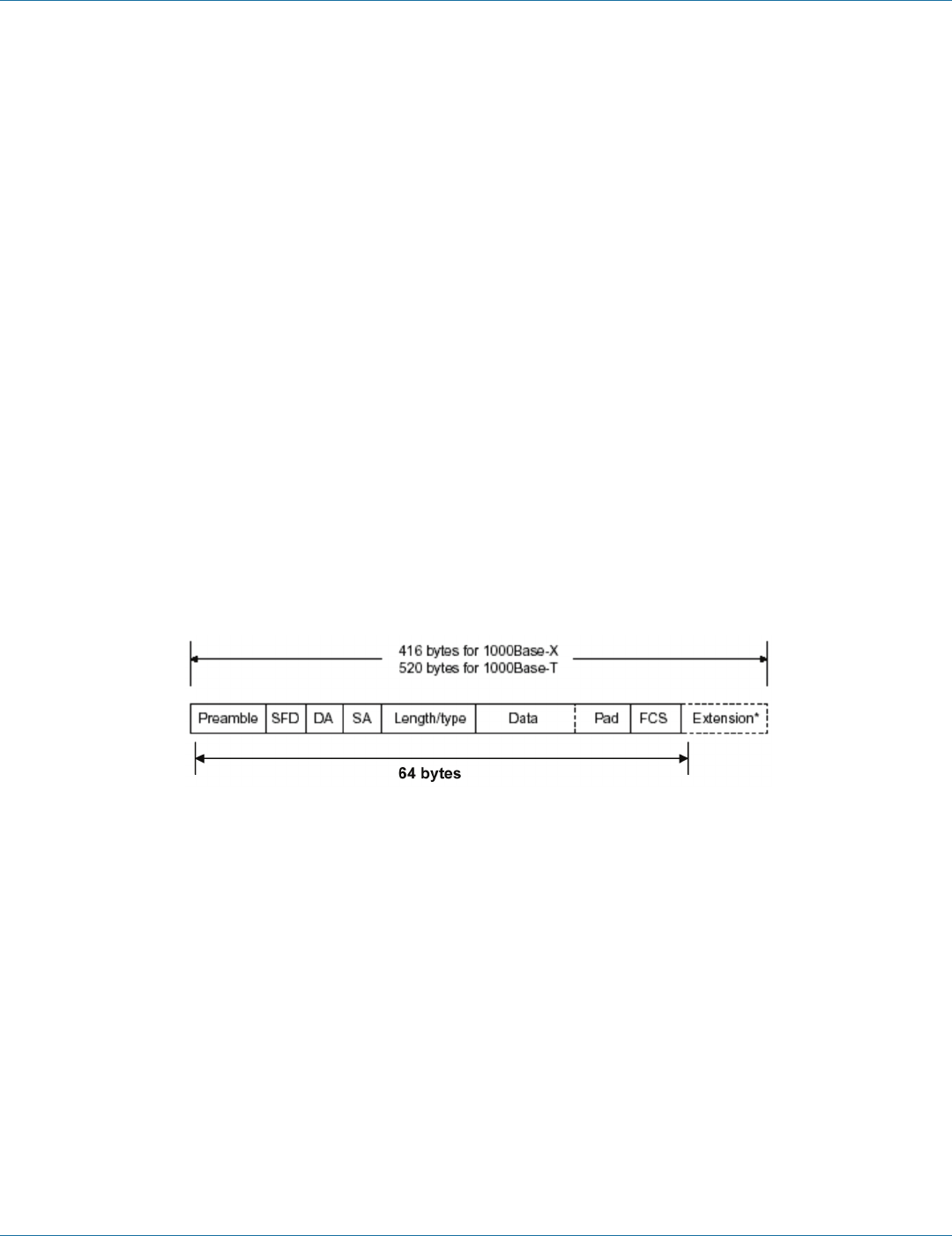
724-746-5500 | blackbox.com
Page 32
Chapter 4: Basic Concepts and Management
4. During the transmission, the MAC keeps monitoring the status of the medium. If no collision happens until the end of the
frame, it transmits successfully. If there is a collision, the MAC will send the patterned jamming bit to guarantee the collision
event is propagated to all involved network devices, then wait for a random period of time, called back off time. When backoff
time expires, the MAC goes back to the beginning state and attempts to transmit again. After a collision happens, MAC
increases the transmission attempts. If the count of the transmission attempts reaches 16 times, the frame in the MAC’s queue
will be discarded.
Ethernet MAC transmits frames in half-duplex and full-duplex modes. In half-duplex operation mode, the MAC can either
transmit or receive frames at a moment, but cannot transmit and receive at the same time.
Because the transmission of a MAC frame with the half-duplex operation exists only in the same collision domain, the carrier
signal needs to spend time to travel to reach the targeted device. For the two most-distant devices in the same collision domain,
when one sends the frame first, and the second sends the frame just before the frame from the first device arrives. The collision
happens and will be detected by the second device immediately. Because of the medium delay, this corrupted signal needs to
spend some time to propagate back to the first device. The maximum time to detect a collision is approximately twice the signal
propagation time between the two most-distant devices. This maximum time is traded-off by the collision recovery time and the
diameter of the LAN.
In the original 802.3 specification, Ethernet operates in half duplex only. Under this condition, when in 10-Mbps LAN, it’s 2500
meters, in 100-Mbps LAN, it’s approximately 200 meters and in 1000-Mbps, 200 meters. According to the theory, it should be
20 meters. But it’s not practical, so the LAN diameter is kept by increasing the minimum frame size with a variable-length
non-data extension bit field that is removed at the receiving MAC. The following diagrams show the frame format suitable for
10M, 100M, and 1000M Ethernet, and some parameter values that apply to all these three types of Ethernet.
Gigabit Ethernet chips in practice are supported in full-duplex mode only, as well as all network vendors’ devices. The switch’s
Gigabit module supports only full-duplex mode.
Figure 4-4. Gigabit Ethernet Frame.



